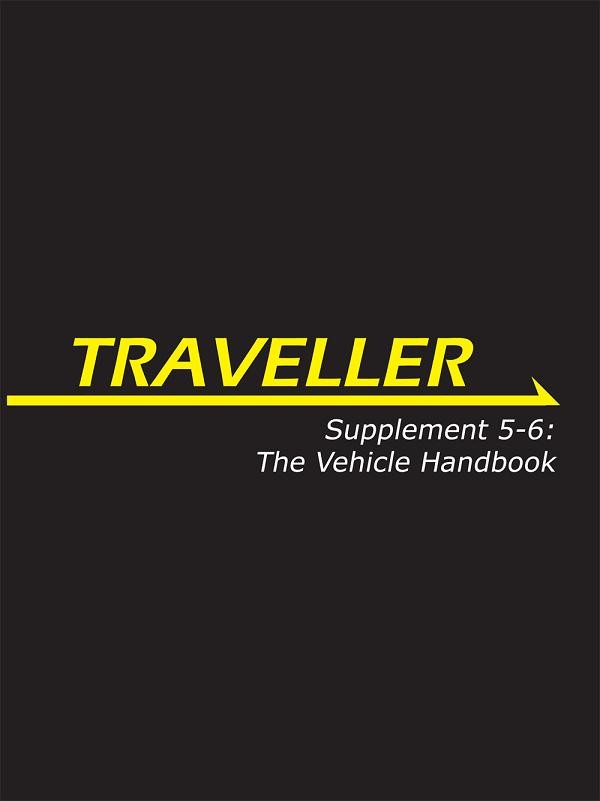Mongoose Traveller Supplement 5-6: The Vehicle Handbook
This article originally appeared in the September 2012 issue.
 Supplement
5-6: The Vehicle Handbook. Colin Dunn, Matthew Sprange, Nick
Robinson
Supplement
5-6: The Vehicle Handbook. Colin Dunn, Matthew Sprange, Nick
Robinson
Mongoose Publishing. http://www.mongoosepublishing.com
176pp, hardbound
US$39.99/UKú29.99
After much adverse feedback, Mongoose revamped the vehicle design system and combined the originally-separate civilian and military vehicle guides into a single volume.
On the Shelf
The Vehicle Handbook is a generic supplement, not tied to any particular setting. As such, it sports the standard solid black cover, with the yellow Traveller-and-arrow logo. The unneeded and essentially meaningless tagline is “Transportation fluctuation”.
Initial Impressions
As with most recent Mongoose supplements, this volume is easy to read, with well-chosen fonts and liberal use of white space. The sections appear to be in a logical order, so that one may work through a vehicle design with minimum flipping back and forth in the book. There are few illustrations, and those that do exist tend to be dark enough to obscure details. There is a mix of 3D renders and various styles of drawing.
On Closer Inspection
It must be understood that I did not previously examine the original Supplements 5 and 6 (Civilian and Military Vehicles, respectively), so I cannot comment on the changes to the design system.
The book leads off with explanation of the reason for the new rules and design system, and notes explicitly that not all core rulebook rules are superseded. A design checklist follows, and then the specific new rules pertaining to various type of vehicles and specific performance metrics. This is sufficient to bring us to page 8, with the actual ‘gearheading’ beginning on page 9. These sections follow the sequence in the design checklist at the beginning of the book, making it fairly easy to work up a complete design quickly.
The available options are extensive, and vehicles that weren’t possible to design sensibly in previous versions of Traveller are easily accommodated in this volume—including such things as trams, commuter trains, walkers (including ‘mechs’), and so on.
Unlike previous versions of Traveller, this supplement treats Battle Dress as a vehicle, rather than as a type of personal armor. The basic design sequence is the same, but the special nature of Battle Dress means that a separate section, with its own relevant tables, is quite definitely warranted.
Two worked-up examples follow, one purely civilian, one military. The examples define the vehicle mission and design parameters, then walk you through each step, and finally present you with the worked-up vehicle stat block. Up to this point, the book has been quite economical, and we’re only up to page 54... so what is on the remaining 122 pages?
It’s not always going to be possible to sit and work up a custom design, and sometimes a ‘stock’ design is all that you really need. These are provided in abundance, broken down by type, with separate sections for civilian and military vechicles, and additional sections for looking at alien (including human aliens like Zhodani or Sword Worlders) designs. Sections for Judge Dredd, Strontium Dog, and Hammer’s Slammers vehicles are also included.
Conclusion
It could be argued that this supplement is overpriced, given that only about a third of it is actual rules. However, if it were presented as two softcovers, one with just the rules and a separate Vehicle Catalog, the final tab would probably be higher, and you wouldn’t get the more durable hardcover binding. Though something like it has been called for for years, it’s become almost a reflex to work around its lack. If you do need or want what it offers, though, it’s money well-spent.
 Freelance
Traveller
Freelance
Traveller